As a loyal and active MBTI trainer and thought leader for over twenty years, I was intrigued but skeptical about the Pearman—Type’s newest assessment tool, originally published by MHS in late 2015 and recently revised. Long a fan of both MHS (the Pearman’s publisher) and Roger Pearman himself (one of Type’s and the MBTI’s most respected authors and researchers), I had no doubt of the tool’s quality, but I was not sure Jung’s Type theory needed a new approach. However, now that I have studied, used and trained with the Pearman Personality Integrator , I love it for a few very specific reasons.
The Top 5 Pearman Features
- Natural vs. Demonstrated
I have never taught an MBTI class within which people did not struggle with the difference between Type (hard-wiring) and behavior (what people actually do). The introverted presenter, the detailed intuitive, the person who feels she is one way at work and another at home—these are common reactions that the MBTI’s approach to Type does not address.
The Pearman allows me to present what is most natural for me (my Type) as well as what is most demonstrated (my behavior). Now my voice track and approach to this most common of struggles are supported by the tool I use.
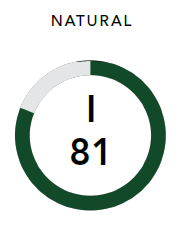
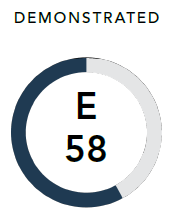
- Scores on a Continuum
MBTI is and has always been about the sort—being in one bucket or the other within this dichotomous theory. Results are THIS or THAT, and the only numbers associated with MBTI results are clarity numbers—how clear the results are. How much confidence do we have that the sort was accurate? MBTI is a sorting tool. I actually like this—within Type, the sort is important, but presenting the results as so starkly either/or does not speak to most people’s experience of themselves or others around them. OK, so you and I both prefer Introversion, but you seem more introverted than I do. The “amount” of Type feels relevant, even important to so many, and the MBTI is not equipped to illuminate or address this. The Pearman is.
The Pearman’s output (an elegant new construct called the circle score) communicates the preference (what is most natural) and the behavior (what is most demonstrated) in terms of a percentile—how natural it feels to me or how much I demonstrate that function or attitude compared to the rest of the population. For years, the official MBTI answer was, “Don’t get hung-up on your scores. The sort, not the score, is what is important.” Now, the score becomes a valuable and powerful piece of data in this self-awareness and development process.
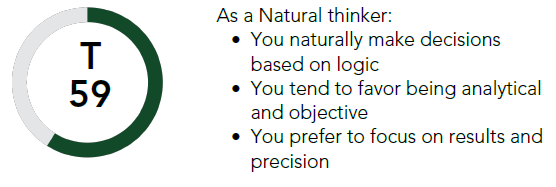
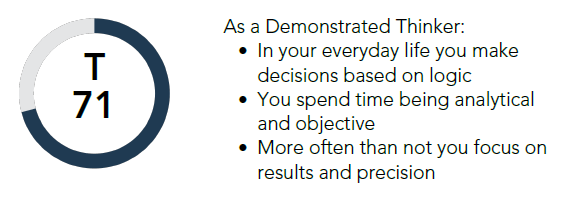
- The 8 Mental Functions
The theory behind the MBTI asserts there are eight mental functions—the fundamental forms of mental/cognitive activity—an introverted and an extraverted manifestation of Sensing, iNtuition, Feeling and Thinking. These eight mental functions are—and have always been—the foundation of Psychological Type. A challenge the MBTI has always had is that it does not speak to or in any way illuminate these functions. Trainers or coaches need to translate MBTI results into Type codes that can then lead to a discussion of these functions. The MBTI has always made a function-level approach to Type challenging.
The Pearman fixes that by being the first validated tool to measure Type on the function level. How natural is extraverted Sensing for me, and—separate from that—how much do I actually extravert my Sensing? How much easier is extraverted Feeling for me than extraverted Thinking? These are powerful questions that feed an actionable development plan, and with the Pearman, they can be answered with specific assessment data.
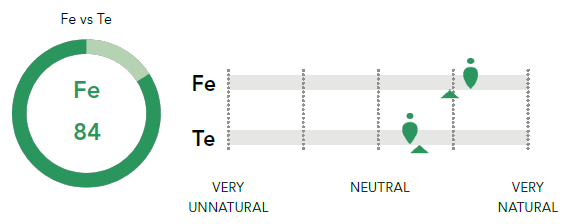
- Development Focus
The MBTI—which I do and always will adore—is a simple sorting tool, and while the Type profile that it yields can lead to countless insights and growth opportunities, the MBTI is about the static profile—the sort.
The Pearman, by avoiding this hard sort and profile focus, is about Type development—moving beyond what is natural to access and even get good at all of the functions of Type. The MBTI is about Type identification; The Pearman Pearman is about Type Development.
- FlexIndex
The Pearman is loaded with data that highlight and illuminate stretch-points—the fact that so much of what we do and how we develop is in the opposite direction from what is most natural. The underpinning belief is that there is no growth, no development—there is not even effective living without the ability to stretch. But all this stretching requires flexibility. The Pearman includes the FlexIndex, a measure of your agility and resilience.
The FlexIndex is comprised of five component pieces that each contribute to our resilience and ability to grow and develop—Proactivity, Composure, Connectivity, Variety Seeking and Rejuvenation. Each of these flexibility components—measured along a traditional continuum—can be increased, and each can be (but need not be) related back to the individual’s Type results. The FlexIndex is brilliant way insure that the focus of the Pearman is growth and development. With resilience being such a hot and urgently searched topic these days, the FlexIndex is also timely and resonant for this reason as well.
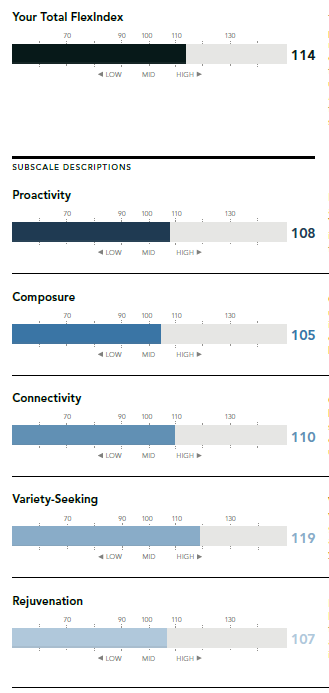

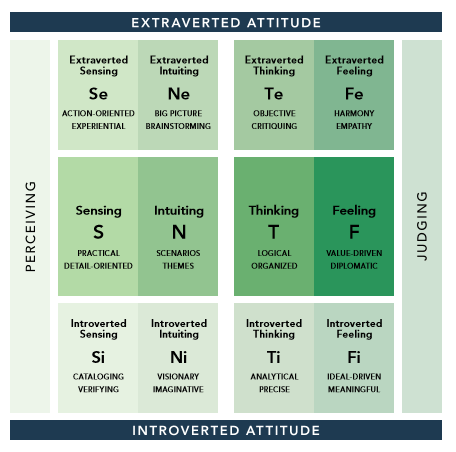
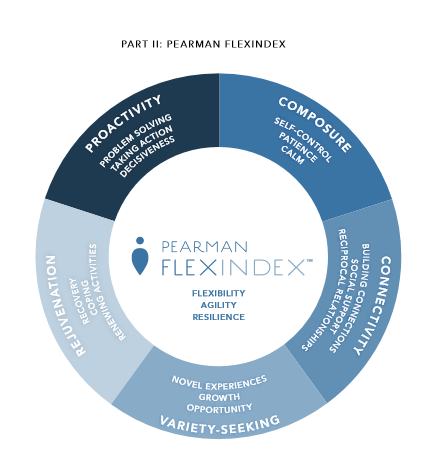
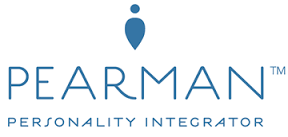
Wonderful article! I’m very excited now to see this tool for myself!
Hile, in my opinion, you left out the most important reason to use Pearman — Reason #6: Hile Rutledge will be your guide, your facilitator, and navigator, and, OKA will help you before, during and after the training to use this powerful new tool to your advantage. Those of us who know Hile, know that he is tireless in promoting EQ tools that reflect significant theoretical underpinnings (like the Pearman) and then make them powerfully practical for the practitioner community to immediately use with our clients. I can’t wait to make time to attend — hopefully, the October class. I took the Pearman online and found the results significant/fascinating and have done some self-diagnosis over the past few months and look forward to receiving your insights and tips to clarify and better understand my results and my FlexIndex. Using it with my many clients who value powerful OD tools, like this one, is already underway as I’m helping them see the value and benefits in conversations. Bar none, Hile, you are the most competent, diplomatic and entertaining “train-the-trainer” expert I have ever seen in action and this tool is sure to enjoy great success in our hands because of your influence and gravitas! Thank you for your partnership and may the fruits of your OD labor overflow!
Hile,
Thanks for this great article. I just did my first pearman training… I had 2 people score 50 – 50 . I find this exciting!
Hopefully, I’ll be doing more Pearman training when I get my business going in 2 weeks!!
Thanks again.
Lori